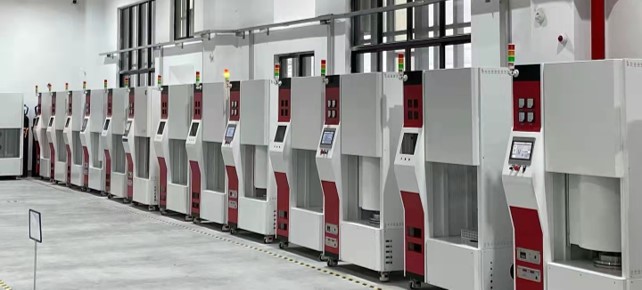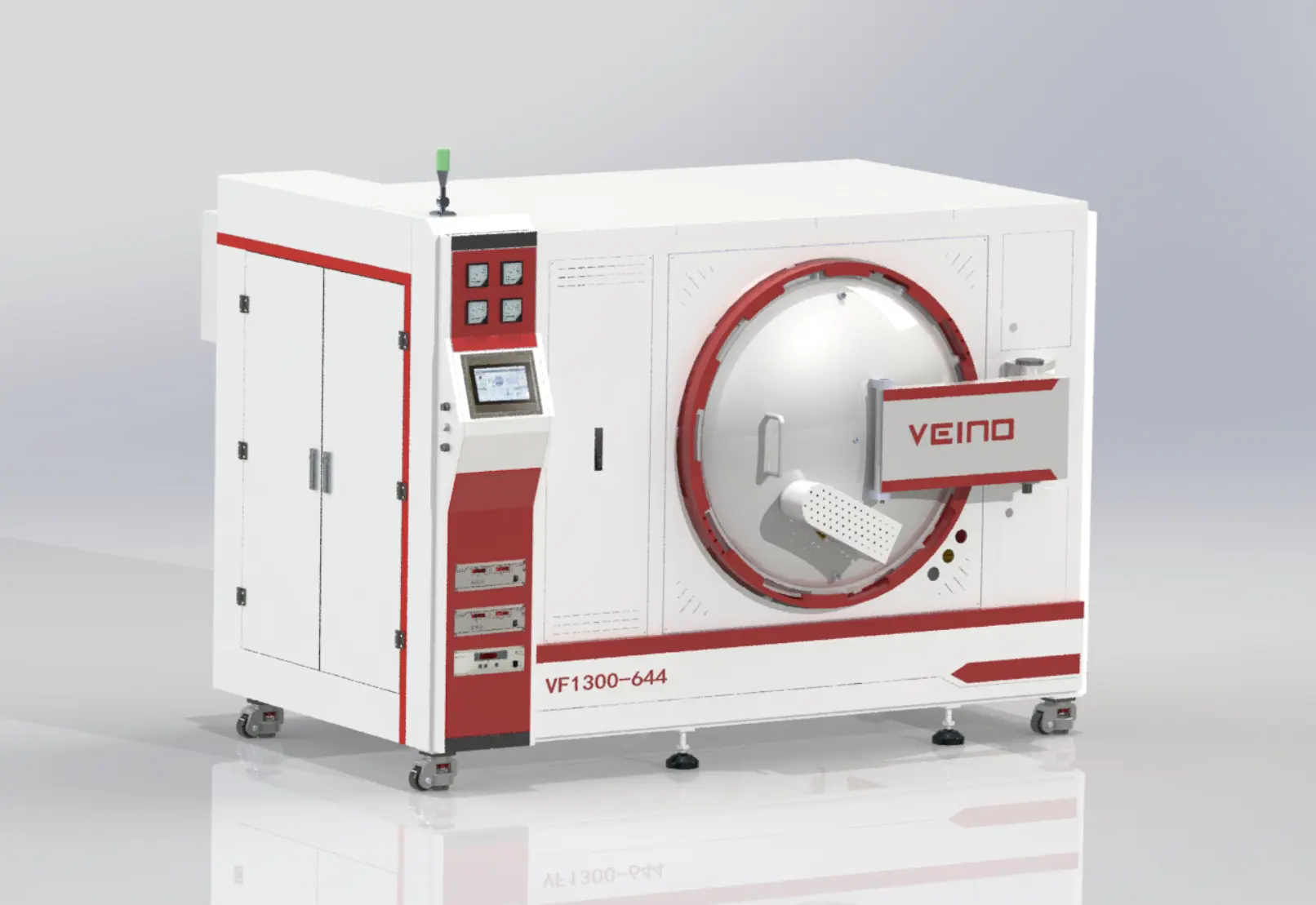High Vacuum Brazing Furnace for Diamond Tools: Precision Engineering by Normantherm
In the modern manufacturing landscape, the demand for ultra-precise, high-strength, and thermally stable tools has grown exponentially—especially in sectors like aerospace, automotive, mining, and electronics. Among the technologies enabling this leap is vacuum brazing, a highly controlled joining process conducted in vacuum furnaces. For manufacturers dealing with diamond tools—such as bits, millers, cutters, and wire saw beads—the importance of a specialized, high-vacuum furnace is paramount.
This blog explores how Normantherm’s High Vacuum Brazing Furnace is engineered specifically for these needs, combining ultra-clean joining conditions with superior bonding strength for industrial tools.
What Is Vacuum Brazing?
Vacuum brazing is a metal-joining process that fuses two or more materials by melting a filler metal, without melting the base metals. The process takes place in a vacuum environment (typically <10⁻³ Pa), eliminating the need for flux and preventing oxidation, contamination, or thermal distortion.
Why Use Vacuum Brazing?
- Oxidation-Free: No exposure to oxygen ensures clean, contamination-free joints.
- High Precision: Tolerances within microns are achievable.
- Strong Bonds: Better metallurgical adhesion than mechanical fasteners or adhesives.
- No Flux Residue: Unlike traditional brazing, there is no chemical cleanup.
Introducing Normantherm’s High Vacuum Brazing Furnace
Normantherm's High Vacuum Brazing Furnace is a high-performance industrial solution developed for diamond tool fabrication. With vacuum levels reaching 6.0×10⁻⁴ Pa and a maximum temperature of 1300°C, it enables flawless joining of hard-to-braze materials like PCD (Polycrystalline Diamond), PCBN (Polycrystalline Cubic Boron Nitride), and carbide substrates.
Technical Specifications
Parameter | Specification |
| Max. Temperature | 1300°C |
| Ultimate Vacuum | 6.0 × 10⁻⁴ Pa |
| Temperature Uniformity | ±5°C |
| Heating Elements | Graphite/Molybdenum |
| Chamber Type | Horizontal/Front-loading |
| Control Interface | PLC + HMI Touchscreen |
| Application Focus | Diamond Tools Brazing |
Why Is Vacuum Important in Brazing?
The high vacuum level (below 10⁻³ Pa) ensures that no oxygen, nitrogen, or moisture remains in the environment. This is critical because:
- Prevents oxidation: Ensures metal surfaces stay clean for stronger joints
- Improves wetting: The filler metal flows smoothly without contamination.
- Enhances mechanical strength: Clean joints form metallurgically sound bonds.
- Minimizes post-processing: No need for surface cleaning or chemical washing.
Application in Diamond Tool Manufacturing
Diamond tools require extreme hardness, heat resistance, and bonding integrity. The brazing process must meet these standards to ensure performance under tough industrial conditions.
Tools Commonly Brazed in the Furnace
- Diamond Drill Bits: Used in geological and construction drilling.
- Milling Tools: For machining hard materials.
- Cutting Tools: For high-speed cutting in CNC systems.
- Wire Saw Beads: For cutting reinforced concrete and stone.
Brazing Alloys Used
Normantherm’s furnace supports the use of high-performance filler materials like:
- Ni-Cr-B-Si alloys
- Ag-Cu based alloys
- Cu-Mn-Ni alloys
These brazing alloys exhibit low melting ranges (780°C–1100°C) and excellent wettability with carbide and steel substrates.
Features That Set Normantherm Apart 1. High Vacuum System
The double-stage rotary vane pump system achieves vacuum levels down to 6.0 × 10⁻⁴ Pa, which is ideal for oxygen-sensitive brazing alloys.
2. Uniform Temperature Distribution
Equipped with a multi-zone heating system and high-purity insulation, Normantherm ensures temperature uniformity of ±5°C, which is crucial for consistent brazing performance.
3. Integrated PLC Control
Operators can program multiple steps—ramp rate, holding time, and cooling cycles—via a touchscreen interface, enabling full automation and reducing error.
4. Rapid Cooling Mechanism
Optional gas quenching (argon or nitrogen) enables fast cooling, shortening production time and enhancing productivity.
5. Energy Efficiency
High thermal insulation and PID-controlled heating elements ensure reduced energy consumption without compromising performance.
Real-World Performance and Reliability
Normantherm has already delivered over 300 units of High Vacuum Brazing Furnaces globally to toolmakers and metalworking plants. Here are some insights based on operational data:
Metric | Performance |
| Mean Cycle Time | 3.5 hours (including heating & cooling) |
| Avg. Bond Strength (PCD on Carbide) | >400 MPa |
| Power Consumption (Avg per cycle) | 25–30 kWh |
| Tool Yield Rate | >98% |
| Annual Maintenance Cost | <2% of equipment value |
Safety and Standards Compliance
Normantherm’s furnaces comply with:
- CE Certification (Europe)
- ISO 9001:2015 Quality Management
- GB/T 2900-2021 Chinese Industrial Equipment Safety
It features safety interlocks, over-temperature protection, and emergency stop systems.
Customization Options
Normantherm allows clients to tailor the furnace based on:
- Chamber size: Small to large batches (standard: 500 × 500 × 600 mm)
- Heating elements: Graphite, Molybdenum, or Tungste
- Process Gas Ports: Argon, Nitrogen, Hydrogen-ready
- Data Logging: Ethernet and USB exportable cycle logs
Cost Efficiency and ROI
The initial investment in a vacuum brazing furnace is higher than conventional methods, but the Return on Investment (ROI) is rapid, especially in high-volume production.
Factor | Traditional Brazing | Normantherm Brazing |
| Avg. Tool Life | 60 hours | 85 hours |
| Post-Processing | Required | None |
| Environmental Hazard | High (flux fumes) | Minimal |
| Cycle Time (Avg.) | 5–6 hours | 3.5 hours |
| Operator Dependence | High | Low (automated) |
Break-even typically occurs within 10–14 months in continuous operations.
Conclusion
For manufacturers aiming to stay competitive in toolmaking and metal processing, investing in high-precision vacuum brazing technology is no longer optional—it’s essential. Normantherm’s High Vacuum Brazing Furnace offers not only engineering excellence but also economic efficiency, all wrapped in a compact, intelligent design.
Whether you produce drill bits, cutters, or specialized diamond tools, this furnace delivers the precision, repeatability, and bonding strength you need to excel in today’s global manufacturing environment.
You may also like

The Future of 3D Printing in Heat Treatment: How Normantherm is Leading the Way.

Vacuum Brazing Technology: The Key to Stronger and More Durable Joints.

